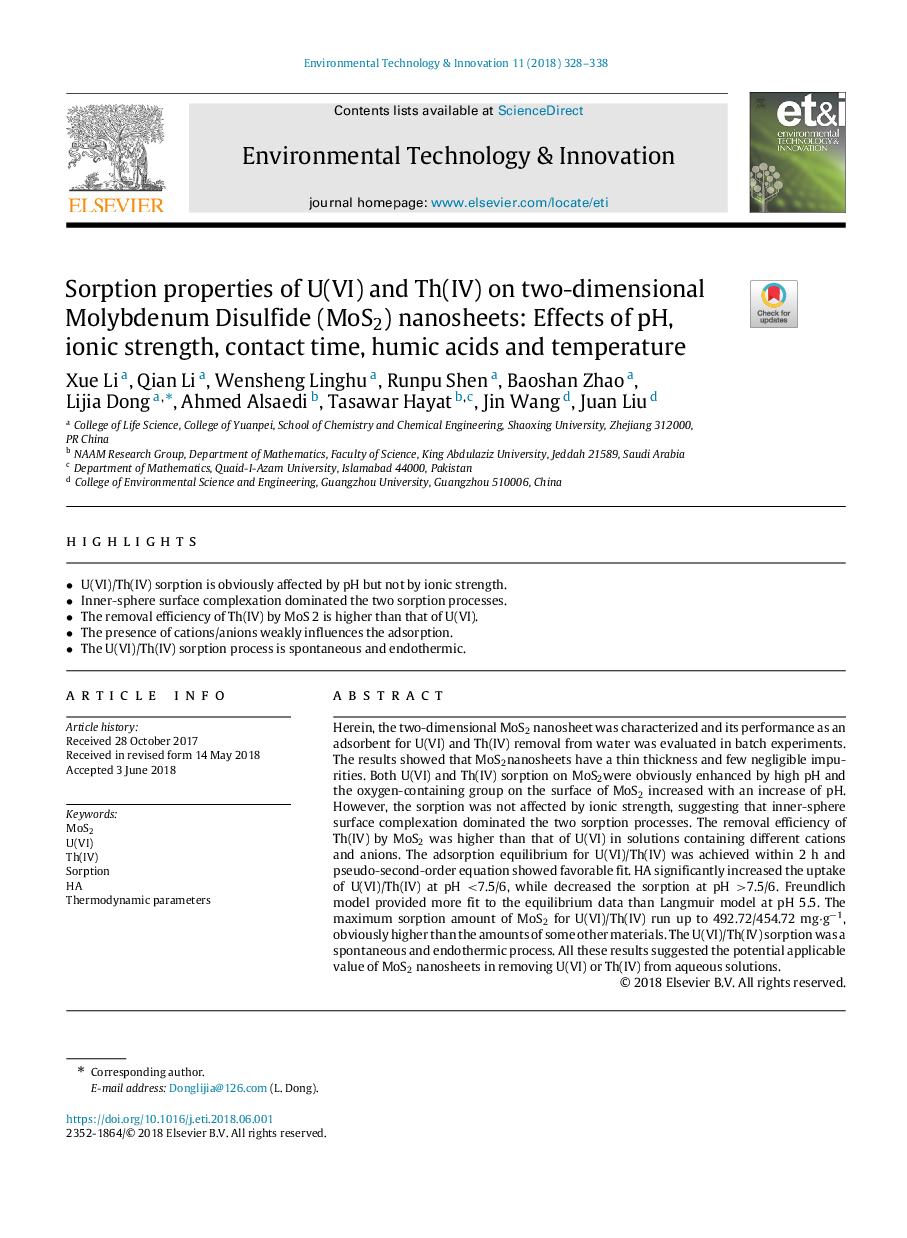| Article ID | Journal | Published Year | Pages | File Type |
|---|---|---|---|---|
| 8857929 | Environmental Technology & Innovation | 2018 | 11 Pages |
Abstract
Herein, the two-dimensional MoS2 nanosheet was characterized and its performance as an adsorbent for U(VI) and Th(IV) removal from water was evaluated in batch experiments. The results showed that MoS2nanosheets have a thin thickness and few negligible impurities. Both U(VI) and Th(IV) sorption on MoS2were obviously enhanced by high pH and the oxygen-containing group on the surface of MoS2 increased with an increase of pH. However, the sorption was not affected by ionic strength, suggesting that inner-sphere surface complexation dominated the two sorption processes. The removal efficiency of Th(IV) by MoS2 was higher than that of U(VI) in solutions containing different cations and anions. The adsorption equilibrium for U(VI)/Th(IV) was achieved within 2 h and pseudo-second-order equation showed favorable fit. HA significantly increased the uptake of U(VI)/Th(IV) at pH <7.5/6, while decreased the sorption at pH >7.5/6. Freundlich model provided more fit to the equilibrium data than Langmuir model at pH 5.5. The maximum sorption amount of MoS2 for U(VI)/Th(IV) run up to 492.72/454.72 mgâ
gâ1, obviously higher than the amounts of some other materials. The U(VI)/Th(IV) sorption was a spontaneous and endothermic process. All these results suggested the potential applicable value of MoS2 nanosheets in removing U(VI) or Th(IV) from aqueous solutions.
Related Topics
Life Sciences
Environmental Science
Environmental Chemistry
Authors
Xue Li, Qian Li, Wensheng Linghu, Runpu Shen, Baoshan Zhao, Lijia Dong, Ahmed Alsaedi, Tasawar Hayat, Jin Wang, Juan Liu,
